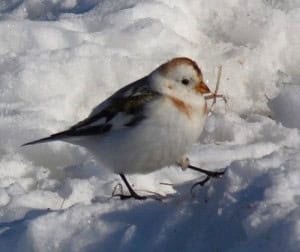
Snow Buntings are the first of the summer birds to arrive in the north. Although it is still minus 20 degrees C (-4 F) at night and a little below freezing during the day, the Snow Buntings arrive in mid-March in the Yukon in northern Canada.
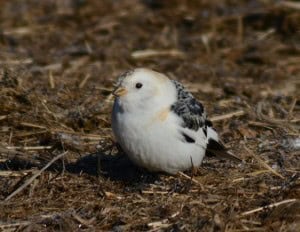
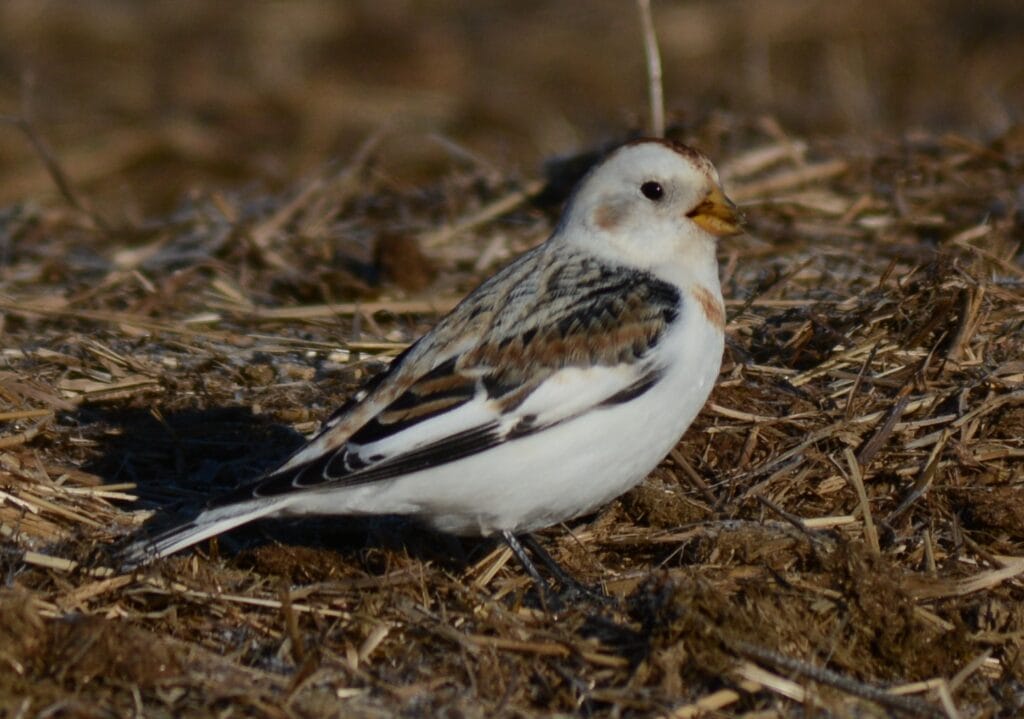
Snow Buntings are appropriately named. They are mostly white, with black backs and wingtips and a few light-brown spots, and they arrive while there is still plenty of snow on the ground. You might say that they look like black-and-white sparrows.
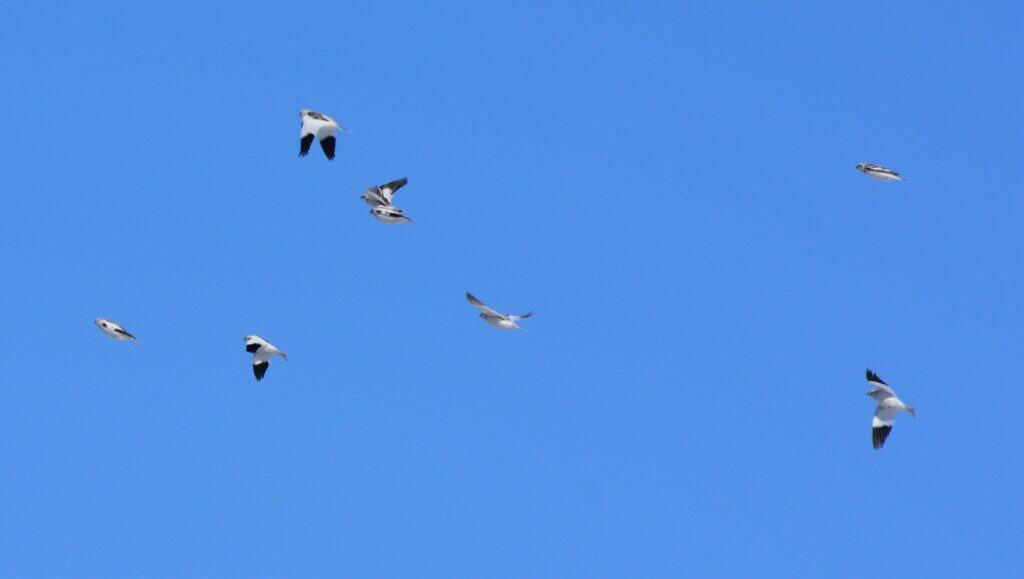
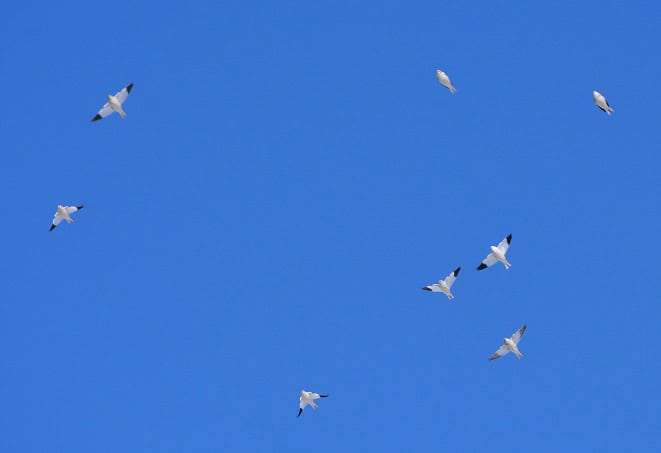
They fly in tight groups and are lovely to watch. At times, they seem to disappear. Then, they tilt their wings in the other direction, and you see a bunch of brilliant white spots against a blue background. Lovely!
Migration and colour change
During summer, they migrate to the Arctic Ocean shores of Canada, Alaska, Greenland, Iceland, and northern Norway. They don’t live in the Yukon and are only seen during migration.
During the winter months, when they are in the south, they are brown and white. By the time they reach the Arctic, they are all white with black-and-white wingtips and tails. The females have some grey on the head and back. The wing-tips of juvenile birds returning to the Arctic for the first time have dark grey wing tips, while mature adults are jet black. The birds at this time of year are in an intermediate stage. They are mostly black and white but still have some brown on them. From below, you would see an all-white bird with black wingtips.
During winter, they retreat to central North America and Europe. Their plumage is more brown during the winter and mostly black and white in the summer breeding season.
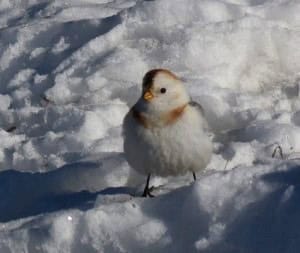

They often stop on ranches where seeds are lying around that the horses and cows miss. They eat both insects and seeds. I like to see them in the snow.
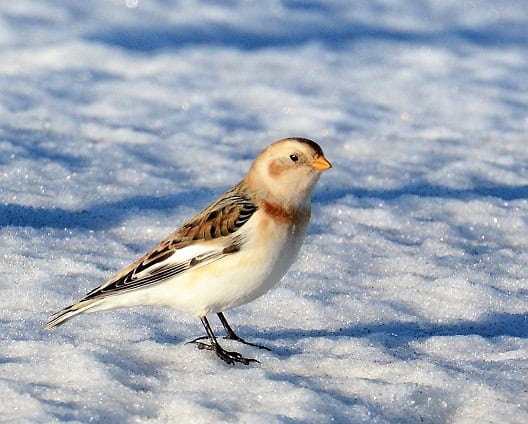
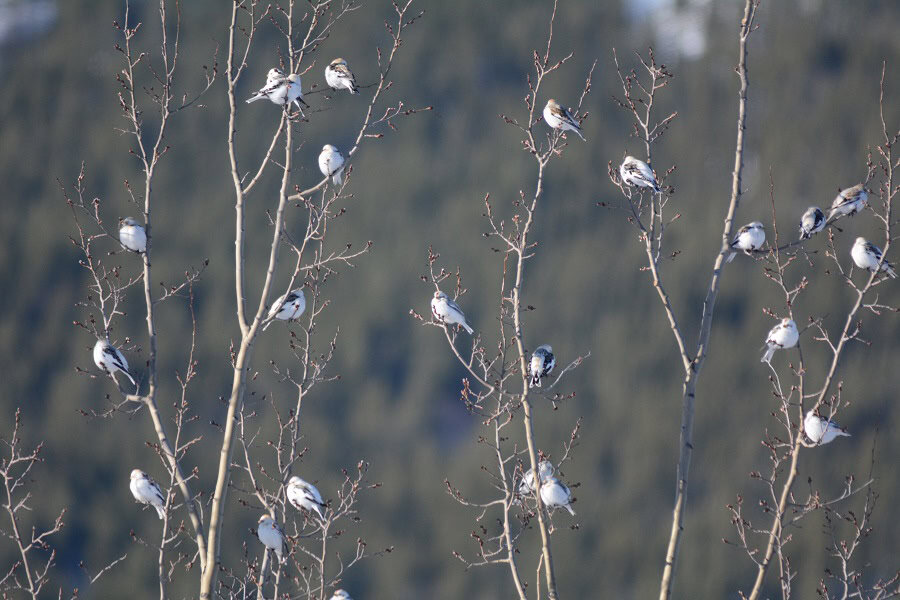
Snow Buntings cannot be mistaken for any other bird unless you live on the west coast of Alaska. The only other small black-and-white bird is the McKay’s Bunting, which lives on the west coast of Alaska all year round.
I am waiting for the Tundra Swan migration and also want to see the Golden Plovers when they arrive. The swans should arrive early in April. The insect-eaters will arrive last. Although there are billions of insects in the Arctic during the summer months, they cannot survive here during the winter without parka and snowshoes.
It is an exciting time in the north for birders.